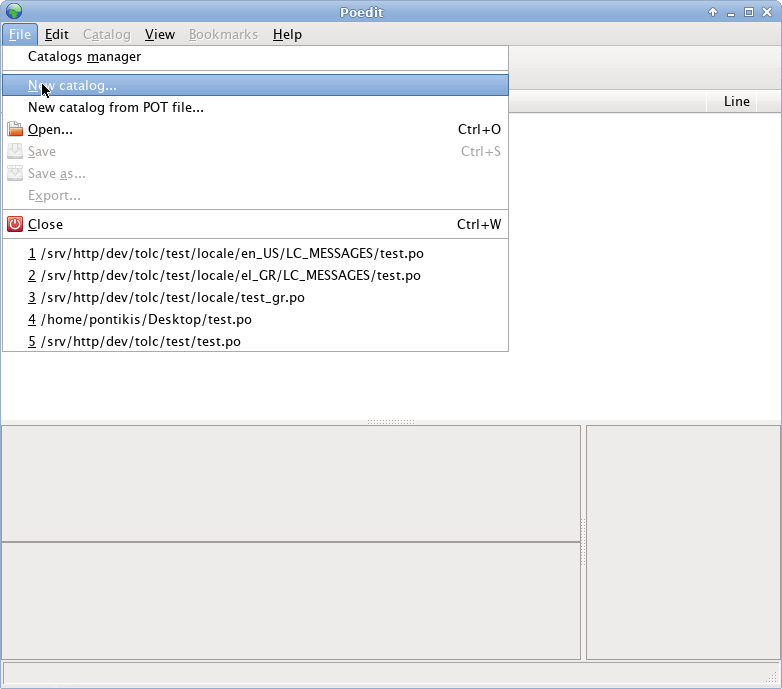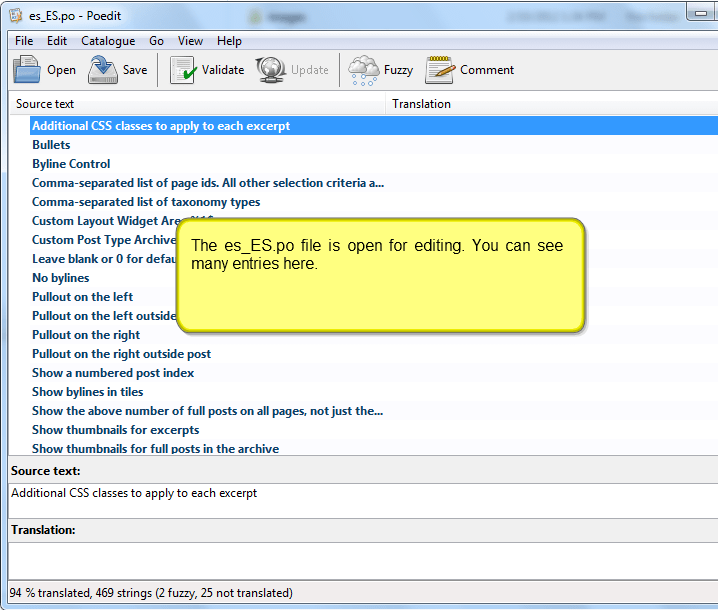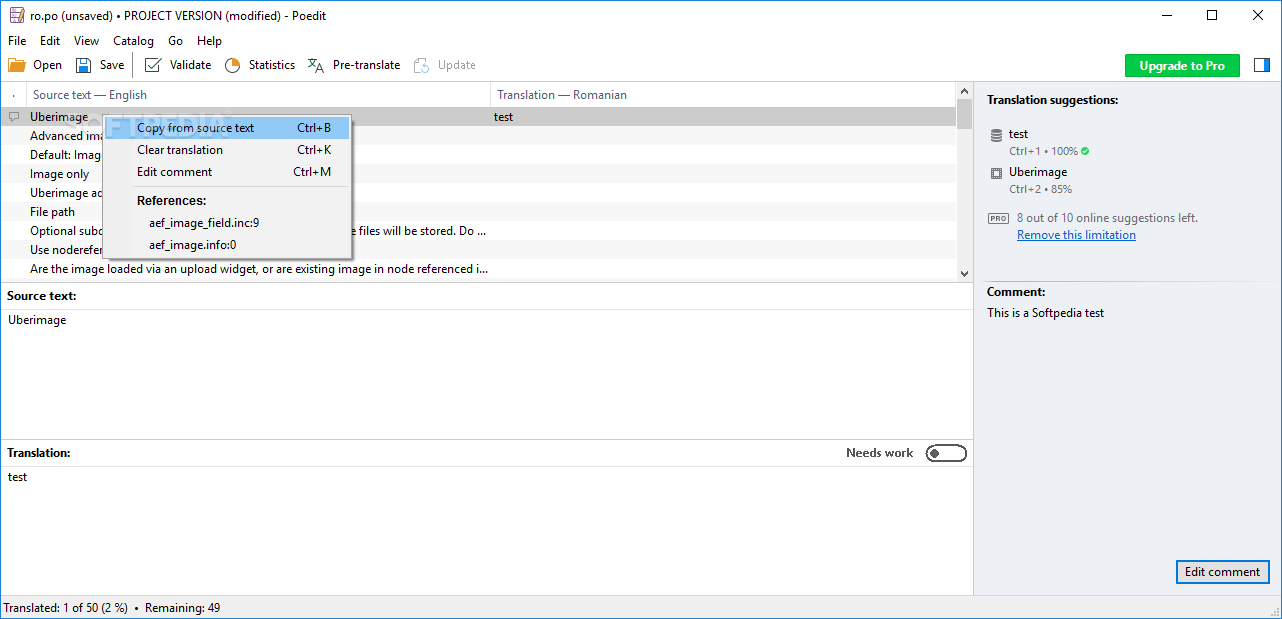

To do this, you’ll need to navigate to your font asset in your game, and then click to open it, and you should see a menu that allows you to set the Default Font Family, as well as Fallback Font Families. So, the alternate method that is much simpler is to supply a Fallback Font Family to the fonts that you use in the game.

However, that is quite difficult and time consuming to do.
POEDIT ADD SOURCE KEY UPDATE
Obviously, it would be ideal to have a font that encompassed all languages, or you could update your font to include these new characters. Now, all that’s left is to make sure our fonts and widgets are setup accordingly. But before this text will show up in-game or in widgets, we need to make sure to COMPILE TEXT, this is done by clicking the “Compile Text” button on the rightmost of the bar in which you Gather, Import and Export text from. This should import into Unreal, associated to the proper language. Go back into Unreal and in the localization Dashboard, click “Import Text” and select the Game folder.

Once it’s done, make sure to save the file, overwriting the file you opened. Once you open it, if you have the paid version, you can click on the “Pre-translate” button, and it will make web requests to get translations for all the strings you have and translate them. Once the files are done exporting, open one in PoEdit, the exported files can be found in /Game.po. *.po files are apparently an industry standard file format for localization. po files, which is what I use PoEdit to open. Keep the export folder set to the default, and it should generate many folders for each language that you translate to.
POEDIT ADD SOURCE KEY FREE
So, feel free to use whatever translation service/company you want, but I’ll be going through my process with PoEdit.įirst, we need to export our languages, this can be done simply from the “Export Text” button in the Localization Dashboard next to the “Gather Text” button. This would be a cheap way to test out localization without paying someone around 10 cents / word (in our case 7,000 x. This gives translations for our game which is around 7,000 words in a couple minutes, and the translations, while not good, are passable. Allowing you to add more words in 100,000 word increments for $40 more. I’ve opted to use a service called PoEdit, that gives you translations for 50,000 words a month using DeepL or Google Translate, for $40/year. The alternatives would be to translate all the values into bogus, random letters that you make, but this would be bad at letting you visualize the other languages font. This is arguably the most complex step, as it actually requires knowledge of another language, or money to pay someone for translations. Here’s what you need to do, since this list of text is sorted alphabetically, it’s quite easy to see if text is duplicated, just scroll until you find text duplicated two or more times in a row. Make sure that you are in the “Edit Translations From This Culture” window, that can be accessed from the “Localization Dashboard” window. Removing Duplicate Text / Fixing Bad Text That’s the crux of what we’ll be looking at in the next section. The Context that shows you where the text lives in the project is INCREDIBLY useful in determining where to get rid of duplicated, or unnecessary text. This is really cool, as it shows you all of the text that was found, which texts are translated, which are not, and where these texts are located in your game. If you click the button to the right of this bar, it should bring up a n “Edit Translations For This Culture” window. Now, you should have a bar next to your native language that is filled orange! This is because all of your native text is already translated properly, as it is your native language! However, German should show up with 0 words translated. This can be found under Window->Localization Dashboard. So, I’m going to combine the first couple steps I listed above into this one step here, as they are all fairly simple.įirst, you will want to open the Localization Dashboard. Here, I’ll be walking through each of these steps, and how I was able to get localization inside Howloween Hero, and shipped on Steam within a few days. (optional, but a company will charge you per word, so fixing this is beneficial).Įxport the text and translate (use PoEdit for cheap, fast, bad translations). In the Localization Dashboard, add the cultures that you want to support.Ĭheck text for duplicated strings and fix. The whole process can be broken down into 8 steps: The process while seemingly daunting, was actually quite simple. I’ve only worked on one released Unreal Engine game ( Howloween Hero) and we are only now adding in localization for other languages. Last month I delved into Localization in Unreal for the first time.


 0 kommentar(er)
0 kommentar(er)
